Today’s Current Affairs: 4th November 2025 for UPSC IAS exams, State PSC exams, SSC CGL, State SSC, RRB, Railways, Banking Exam & IBPS, etc
Table of Contents
National Beekeeping and Honey Mission:
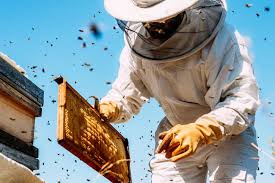
The National Beekeeping & Honey Mission (NBHM) launched in 2021 by the Government of India which is driving the ambitious “Sweet Revolution”.
- It is a Central Sector Scheme launched by the Government of India.
- It focuses on overall promotion and development of scientific beekeeping and the production of quality honey and other beehive products.
- It is implemented through the National Bee Board (NBB).
- Funding: ₹500 crore for three years (2020–21 to 2022–23) and has been extended for another three years (2023–24 to 2025–26).
- It is being implemented through 3 Mini Missions(MMs)
- Mini Mission-I: Under this Mission, thrust will be given on production & productivity improvement of various crops through pollination assisted by adoption of scientific beekeeping;
- Mini Mission-II: This Mission will concentrate on post-harvest management of beekeeping/beehive products including collection, processing, storage, marketing, value addition, etc.
- Mini Mission-III: This Mission will concentrate on research & technology generation for different regions/states/agro-climatic and socio-economic conditions.
- Objectives of National Beekeeping and Honey Mission
- Income & employment generation: Promoting holistic growth of beekeeping industry for providing livelihood support to farm and non-farm households.
- Infrastructure Development: Developing additional infrastructural facilities for developing quality nucleus stock of honeybees, multiplication of stock by bee breeders and post-harvest and marketing infrastructures.
- Quality Control: Setting up of state-of-the-art Labs for testing of honey & other beehive products at regional levels and Mini/Satellite Labs at district levels.
- Traceability: To develop blockchain/ traceability system for of source of honey & other beehive products and using IT tools in beekeeping, including online registration, etc.;
- Skill Development: To promote, develop and disseminate latest technologies and skill development in beekeeping industry for production of honey & other high value beehive products;
- Institutional Framework: Strengthening beekeepers through collective approaches like SHGs, FPOs, and cooperatives.
Doctrine of Severability:
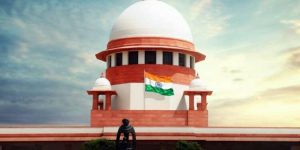
The Supreme Court clarified that the Doctrine of Severability is applicable in Suits for Specific Performance, but only in exceptional cases.
- It is a fundamental legal principle that plays a crucial role in addressing the constitutionality of laws when some provisions are inconsistent with the Fundamental Rights guaranteed by the Constitution.
- In such cases, only the conflicting or repugnant part of the law will be considered void by the courts, not the entire statute.
- In simpler terms, if a specific part of a law violates the Constitution but can be separated from the rest of the law without affecting its functionality, only that problematic part will be removed, not the entire law.
- Another aspect of the doctrine of severability is that if a law combines good and bad provisions using words like ‘and’ or ‘or,’ and the enforcement of the good provision does not depend on the bad one, they are considered severable.
- The good provision will be upheld and enforced even if the bad one cannot or does not exist.
- On the other hand, if there’s a provision that can be used for both legal and illegal purposes, it is invalid and cannot be allowed even for legal purposes.
- The court will declare the entire Act as void if the valid and invalid portions are so intertwined that they cannot be separated.
- It is also called the doctrine of separability.
Vaigai Dam:
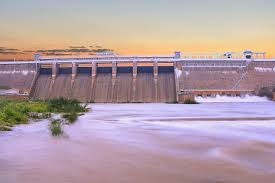
The timely onset of the northeast monsoon and water release from the Vaigai dam have invigorated Madurai’s farming community, prompting a rapid and widespread launch of paddy cultivation across the district’s double-crop regions.
- Vaigai Dam was built in the year 1959 across the Vaigai River.
- The dam measures 111 ft in height and the total storage capacity is 6,143 mcft.
- The dam has been the lifeline of the agricultural lands in the districts of Madurai and Dindigul. It also provides drinking water to Madurai and Andipatti.
- The dam also has a hydropower station that generates 6 megawatts of electricit
- Near the dam, the Government of Tamil Nadu has constructed an Agricultural Research Station to research on a wide variety of crops including cereals and pulses.
- There is a small beautiful garden on both sides of the Vaigai Dam called Little Brindavan that is connected by a small bridge.
- Vaigai River is a river in Tamil Nadu.
- It is considered to be one of the most sacred and ancient rivers in India, as it is mentioned in several Tamil literary and religious texts, such as the Silappatikaram, the Thiruvilayadal Puranam, and the Thirumurugatruppadai.
- It originates from the Varusanadu and Megamalai hills of the Western Ghats.
- It travels through the Pandya Nadu region of Tamil Nadu generally in the south-east direction and rarely causes floods.
- It is 258 kilometres
- Vaigai gets major feed from the Periyar Dam in Kerala. Water from the Periyar River in Kerala is diverted into the Vaigai River in Tamil Nadu via a tunnel through the Western Ghats.
- Its main tributaries are Suruliyaru, Mullaiyaru, Varaganadhi, Manjalaru, Kottagudi, Kridhumaal, and Upparu.
- It is the major river in the fabled city of Madurai, the capital of the ancient and prosperous Pandya kingdom located in southern Tamil Nadu.
Bhavani Island:
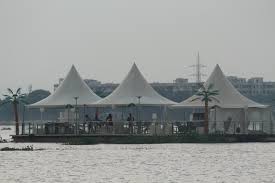
Back-to-back floods at the Prakasam Barrage across the Krishna River have become a bane for the tourism department, which has once again been forced to close Bhavani Island and suspend boat operations, severely impacting tourism revenue.
- It is a river island situated near Vijayawada on the Krishna River in Andhra Pradesh.
- Spread over an area of 133 acres, it is one of the largest river islands in India.
- The island has extensive forest coverage, shimmering ponds and rolling meadows.
- Initially known more for its natural beauty and abundance of flora and fauna, the island has transformed into a well-equipped tourist spot.
- Krishna River is a river of south-central India.
- One of India’s longest rivers, it has a total length of about 1,400 km.
- The river rises in western Maharashtra state in the Western Ghats range near the town of Mahabaleshwar, not far from the coast of the Arabian Sea.
- Krishnabai Temple in Mahabaleshwar is considered to be the starting point of the Krishna River.
- It passes through the Indian states of Maharashtra, Karnataka, Telangana, and Andhra Pradesh and meets the Bay of Bengal at Hamasaladeevi in Andhra Pradesh, on the east coast.
Stabilimenta:

A new study has revealed that the mysterious silk decorations in some spider webs known as stabilimenta may be sophisticated tuning devices that enhance the spider’s ability to locate its next meal by controlling how vibrations travel through the web.
- Stabilimenta are highly UV-reflective distinctive silk structures found in multiple spider species’ webs.
- These “decorations” may look like zig-zagging threads spanning the gap between two adjacent “spokes,” or threads arranged in a circular “platform” around the web center.
- The purpose of stabilimenta within the web is unclear.
- They could help collect water, regulate a spider’s body temperature, or even deter predatory wasps or birds to help the arachnids collect more insects.
- They also may help the spiders pinpoint where their prey is located by helping vibrations move throughout the web.
- Not all spiders use stabilimenta, and members of the same species may decorate their webs in different ways.
Leprosy a Notifiable Disease : Maharashtra

The Maharashtra government has officially declared leprosy a “notifiable disease.”
- Leprosy is an infectious disease caused by a type of bacteria called Mycobacterium leprae.
- It is also known as Hansen’s disease.
- It primarily affects the skin, peripheral nerves, eyes and other organs.
- It is a neglected tropical disease (NTD) which still occurs in more than 120 countries, with around 200 000 new cases reported every year.
- It was declared notifiable in 2005 uniformly under the National Leprosy Eradication Programme (NLEP), Union Ministry of Health and Family Welfare.
- The disease is transmitted through droplets from the nose and mouth of an untreated case of leprosy, containing the causative agent, following prolonged, close contact.
- The disease does not spread through casual contact (like shaking hands or hugging, sharing meals or sitting next to each other).
- The patient stops transmitting the disease upon initiation of treatment.
- It usually takes about 3 to 5 years for symptoms to appear after you come into contact with the bacteria that cause leprosy.
- The main symptom of leprosy is disfiguring skin sores, lumps, or bumps that don’t go away after several weeks or months.
- In some cases, body parts may lose their sense of touch and pain, increasing the likelihood of injuries such as cuts and burns.
- Leprosy is a curable disease.
- The currently recommended treatment regimen consists of three medicines (dapsone, rifampicin and clofazimine) and is referred to as multi-drug therapy (MDT).
Sambhar Lake : Influx Of Migratory Birds

Sambhar Lake is witnessing an extraordinary influx of migratory birds this winter — a rise of nearly 40% compared to last year.
- It is the largest saltwater lake located in the districts of Nagaur and Jaipur in
- This saline wetland is elliptical in shape, with a length of 35.5 km and a breadth varying between 3 km and 11 km.
- It covers an area in excess of 200 sq.km., surrounded on all sides by the Aravalli hills.
- The water from two major ephemeral streams, namely Mendha and Runpangarh, along with numerous rivulets and surface runoff feed the lake.
- It was designated as a Ramsar site in the year 1990.
- It is known for the production of brine/salt and also houses one of the largest salt manufacturing units in the country.
- Several migrating birds visit the waterbody during the winter.
- It is the most important wintering area for flamingoes (both Phoniconaias minor and Phoenicopterus roseus) in India outside the Rann of Kachchh.
- Other migratory species like pelicans, common shelduck, redshank, and common sandpiper, black-winged stilt, Kentish plover, and Ringed plover, Ruff, and Sociable lapwing are also found here.
Alfvén Waves:

Researchers have made a major advance in solar physics by capturing the first direct evidence of small-scale torsional Alfvén waves in the Sun’s outer atmosphere, known as the corona.
- Alfven waves are low-frequency, transverse electromagnetic waves that propagate along the Sun’s magnetic field lines.
- It occurs in a plasma(or conducting fluid), resulting from the interaction of the magnetic fields and electric currents within it.
- These waves were first proposed in 1942 by Nobel Prize-winning physicist Hannes Alfvén, are magnetic fluctuations that transfer energy through plasma.
- Larger and more sporadic Alfven waves linked to solar flares have been detected before.
- The breakthrough was made possible by the unique capabilities of the Daniel K. Inouye Solar Telescope’s Cryogenic Near Infrared Spectropolarimeter (Cryo-NIRSP).
- This is the first time the subtle, ever-present twisting waves, thought to be powerful enough to heat the corona, have been directly confirmed.
- The study suggests that Alfven waves may account for at least half of the energy needed to heat the corona.
UNESCO Creative Cities Network: Lucknow has officially joined

Lucknow has officially joined the UNESCO Creative Cities Network (UCCN) under the Gastronomy category during the 43rd Session of the UNESCO General Conference.
- It was created in 2004 to promote cooperation among cities that have identified creativity as a strategic factor for sustainable urban development.
- It was launched to promote UNESCO’s goals of cultural diversity and strengthen resilience to threats such as climate change, rising inequality, and rapid urbanization.
- The network covers seven creative fields: crafts and folk arts, media arts, film, design, gastronomy, literature and music.
- The network is aimed at leveraging the creative, social, and economic potential of cultural industries.
- It allows member cities to recognise creativity as an essential component of urban development, notably through partnerships involving the public and private sectors and civil society.
- It envisages developing hubs of creativity, innovation and broadening opportunities for creators and professionals in the cultural sector.
- These cities have to achieve the UN agenda of sustainable development.
- Indian Cities in the UCCN: Kozhikode (Literature) and Gwalior (Music) Jaipur (Crafts and Folk Arts), Varanasi (Music), Chennai (Music), Mumbai (Film), Hyderabad (Gastronomy), Lucknow (Gastronomy), and Srinagar (Crafts and Folk Arts).
US Orders Resumption of Nuclear Weapon Testing:
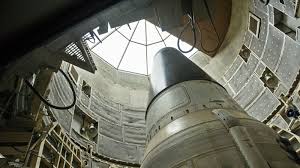
The US President has ordered the resumption of US nuclear weapon testing after a gap of 33 years (1992), marking a major shift in global nuclear policy.
- The nuclear era began in 1945 with the US atomic tests and bombings of Hiroshima and Nagasaki, ending World War II, while the Soviet Union’s 1949 test soon intensified Cold War tensions.
- From 1945 to 1996, over 2,000 nuclear tests were conducted worldwide, with India and Pakistan testing twice in 1998 and North Korea six times between 2006–2017.
- The US last tested in 1992, China and France in 1996, and the Soviet Union in 1990; Russia, inheriting the Soviet Union’s arsenal, has never conducted a test.
- Nuclear tests by the Soviet Union in Kazakhstan and the Arctic and by Western nations in the Pacific islands caused radiation exposure, land contamination, and lasting health and environmental harm.
- The Comprehensive Nuclear-Test-Ban Treaty (CTBT) (1996) bans all nuclear explosions to curb tensions; Russia ratified it in 2000 but revoked it in 2023, while the US has signed but not ratified it.
- Nuclear testing may be resumed to confirm the effectiveness of existing and new weapons and to send strategic messages to rival nations.
GSAT-7R: India’s Heaviest Naval Communication Satellite
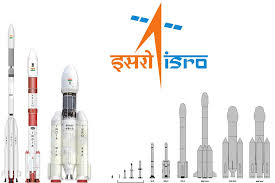
The Indian Space Research Organisation (ISRO) successfully launched GSAT-7R (also known as CMS-03), India’s heaviest indigenously built advanced communication satellite, from Satish Dhawan Space Centre (SDSC), Sriharikota marking a major boost to the country’s space capabilities and naval communications.
- The CMS-03 was successfully launched using the Launch Vehicle Mark-3 (LVM3) on its fifth operational flight (LVM3-M5).
- CMS-03 is a multi-band communication satellite that will provide services over a wide oceanic region including the Indian landmass.
- CMS-03, weighing about 4400kg, is the heaviest communication satellite launched to Geosynchronous Transfer Orbit (GTO) from India.
- The previous mission of LVM3 launched the Chandrayaan-3 mission, where India became the first country to land successfully near the lunar south pole.
- The satellite has been placed in a GTO and will later move into its final Geostationary Orbit using its onboard propulsion system.
- Designed for a 15-year mission life, CMS-03 carries advanced multiband transponders that transmit voice, data, and video signals, ensuring secure, high-capacity communication for the Indian Navy across the Indian Ocean Region (IOR).
- The GSAT-7R replaces the decade-old GSAT-7 (Rukmini), launched in 2013, which has now reached the end of its operational life.
- This new satellite is fully indigenously developed, symbolising progress under Aatmanirbhar Bharat.
- LVM3-M5 strengthens India’s strategic autonomy and reduces reliance on foreign launch vehicles for heavy payloads such as the European Ariane-5.
- It supports Gaganyaan preparations by showcasing LVM3’s heavy-lift capability and cryogenic engine re-ignition test for future missions.
RBI Data on Household Debt and Asset Growth:
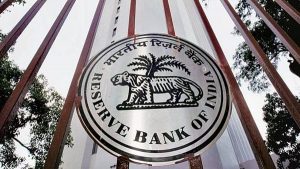
Recent RBI data (2024–25) reveal that Indian households are accumulating debt faster than assets, with annual liabilities rising 102% since 2019–20, outpacing the 48% growth in financial assets.
- The Reserve Bank of India’s financial accounts data track how Indian households build assets and accumulate liabilities annually, offering insights into savings, investment behaviour, and economic resilience.
- Annual household financial assets rose from ₹24.1 lakh crore (2019–20) to ₹35.6 lakh crore (2024–25) — a 48% increase.
- Annual financial liabilities more than doubled from ₹7.5 lakh crore to ₹15.7 lakh crore, marking a 102% rise.
- Financial asset formation declined from 12% to 10.8% of GDP, while liabilities rose from 3.9% to 4.7%.
- Households are diversifying—bank deposits remain dominant, but mutual funds and market-linked instruments are gaining traction.
- Household debt peaked at 6.2% of GDP in 2023–24, slightly easing in 2024–25, suggesting gradual financial stabilization.
Employee’s Enrolment Scheme 2025:

The Ministry of Labour and Employment launched the Employee’s Enrolment Scheme 2025 to expand EPF coverage and promote voluntary compliance among employers.
- The Employee’s Enrolment Scheme 2025 is a special one-time compliance window under the Employees’ Provident Fund Organisation (EPFO) to allow employers to voluntarily enrol eligible employees who were not covered under the EPF between 1 July 2017 and 31 October 2025.
- Organisation Involved: Implemented by the Employees’ Provident Fund Organisation (EPFO) under the Ministry of Labour and Employment.
- Aim:
- To extend social security coverage to all eligible employees under the EPF Act, 1952.
- To encourage voluntary compliance by employers and improve trust between businesses and regulators.
- To promote formalisation of the workforce and ensure financial protection for unregistered employees.
Swachh Survekshan 2025:
The Swachh Survekshan 2025 report, released under the Swachh Bharat Mission, has once again exposed the deep divide in India’s urban cleanliness efforts. While some smaller cities have made impressive strides in maintaining hygiene, several of India’s major metropolitan areas have failed to keep up. This year, Madurai has topped the list as the dirtiest city in India 2025, followed closely by Ludhiana, Chennai, Ranchi, and Bengaluru.
SBI Joins India Bullion Exchange:
The State Bank of India (SBI) announced its first gold trade as a Special Category Client (SCC) on the India International Bullion Exchange (IIBX). The move, announced on 1 November 2025, is expected to reshape how gold is imported and traded in India, especially benefiting MSME jewellers through better pricing and streamlined access.India International Bullion Exchange (IIBX) launched to make India a global bullion trading hub, IIBX operates from GIFT City, Gujarat. It offers a centralised and transparent platform for bullion imports and trading, especially aimed at reducing reliance on opaque and fragmented import channels.
Russia Launches Khabarovsk Submarine:
Russia launched the nuclear-powered submarine Khabarovsk from the Sevmash shipyard in Severodvinsk. Officials described the class as a carrier for advanced underwater weapons and robotic systems, and Russian media and defence sources say these submarines are intended to carry the nuclear‑powered unmanned underwater vehicle known as Poseidon.
Vishvajit Sahay Appointed as Controller General of Defence Accounts:
Shri Vishvajit Sahay, a senior bureaucrat from the Indian Defence Accounts Service (IDAS), took over as the new Controller General of Defence Accounts (CGDA). This key appointment brings to the helm a civil servant with over 30 years of experience in public administration and defence finance, at a time when the Indian defence sector continues to modernise and expand financially.Shri Vishvajit Sahay is a 1990-batch IDAS officer and an alumnus of St. Stephen’s College, University of Delhi.His long administrative career spans critical financial, policy, and planning roles across central ministries and defence establishments.
Vice Admiral B Sivakumar Takes Charge as Chief of Materiel:
Vice Admiral B Sivakumar, AVSM, VSM, took charge as the 40th Chief of Materiel (COM) of the Indian Navy, succeeding Vice Admiral Kiran Deshmukh, AVSM (Ati Vishisht Seva Medal), VSM (Vishisht Seva Medal). This appointment brings to the fore an officer known for his technical excellence, leadership acumen, and vast experience in naval engineering and ship acquisition.Vice Admiral B Sivakumar is an alumnus of the 70th NDA Course and was commissioned as an Electrical Officer in the Indian Navy on 1 July 1987.
PM Modi Inaugurates Chhattisgarh Assembly on State Foundation Day:
Prime Minister Narendra Modi visited Nava Raipur, Chhattisgarh to mark the state’s Silver Jubilee—25 years since its formation in 2000. On this symbolic day, he inaugurated the new Legislative Assembly complex, unveiled a statue of former PM Atal Bihari Vajpayee, and launched infrastructure and welfare projects worth over ₹14,260 crore. The event was a blend of development vision, governance symbolism, and security messaging, signalling Chhattisgarh’s progress and future trajectory
India to Resume Approvals for Chinese Imports After Five-Year Freeze:
India is set to resume approvals for importing goods from China and other countries, ending a five-year freeze imposed after border tensions escalated in 2020. According to government sources, the move is part of a larger strategy to ease supply chain disruptions, support domestic industries, and meet surging consumer demand, particularly following recent Goods and Services Tax (GST) reductions.India halted approvals for many imports from China in mid-2020, shortly after the Galwan Valley clashes, which led to deteriorated bilateral ties
Jyotiraditya Scindia confers Dr. Bhupen Hazarika National Awards:
Union Minister Jyotiraditya Scindia, in his role as Minister for Communications and Development of the North Eastern Region, conferred the Bharat Ratna Dr. Bhupen Hazarika National Awards at a cultural ceremony in Guwahati. Organised by Sarhad Pune, the event was a heartfelt tribute to Bhupen Hazarika’s centenary year, honouring the music legend’s legacy of unity through art.
The Book By Kiran Desai Shortlisted For Booker Prize:
Kiran Desai’s The Loneliness of Sonia and Sunny explores love, family, and cultural identity in a cross-continental saga shortlisted for the 2025 Booker Prize. The Loneliness of Sonia and Sunny by Kiran Desai is a richly layered novel that captures the emotional complexity of modern life across geographies and generations. Weaving together the internal landscapes of love, longing, and displacement, Desai crafts a powerful narrative that bridges India and America, tradition and modernity, youth and legacy.




